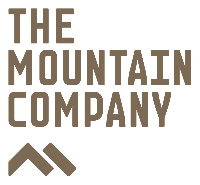
Photo: Bon Po Gompa overlooking Phoksumdo Lake
Our May 2010 Dolpo recce group arrived back to Kathmandu last week after a superb trek. The Upper Dolpo to Jomsom itinerary visits a remote region of Nepal, instead of following the more popular Dolpo Circuit we headed further north to an area very close to the Tibet border and then walked out on the challenging trail to Jomsom thereby completing one section of The Great Himalaya Trail (“GHT”).
Upper Dolpo is a culturally Tibetan region in West Nepal and during the course of the trek we visited many Buddhist and Bon Po (shamanistic pre Buddhist) monasteries. Up until 1996 foreigners were not allowed access to this region so the culture has largely been unchanged and unaffected by tourism. Of particular interest is Shey Gompa, this is revered as one of most important in Upper Dolpo where twice a year many pilgrims make a kora (or circuit) of Crystal Mountain this is known as a younger brother of Mount Kailash in Tibet.
“Upper Dolpo to Jomsom trek is arguably one of the best treks in Nepal” and “better than Lunana Snowman trek in Bhutan!” These were several comments heard while our group discussed the trek on our return Kathmandu last week (and between them this group had done a lot of trekking in the Himalaya).
If this is one of the best treks in the Himalaya then it is worth asking the question, why did we see so few people on the trail? We only met a handful of trekkers during our 3 weeks trip. It is likely that others have been deterred by lack of maps and guidebooks as well as logistical challenges and of course the extra cost to obtain the Restricted Area Permit.
While in Kathmandu I got all of the maps for Upper Dolpo however found they were all out of date and inaccurate. There are no current itineraries with reliable trail descriptions available and even the basic description in the new edition of Lonely Planet “Trekking in Nepal Himalaya” describes the old, disused trail for several sections. During our recce trek we figured out the itinerary from daily discussions with our trek crew, therefore it is essential that the Sirdar and/or cook has visited this region on a previous occasion.
Organising the logistics for this trek are challenging, the Upper Dolpo region is very remote so all groups have to be self reliant in terms of provisions, medical supplies and communications, we used a Thuraya satellite phone that worked well throughout. All food should be brought in with the trekking group as it is not possible to purchase locally in the villages. Our porters and kitchen staff walked in with our supplies for 9 days from the road head near Surkhet to Juphal.
There is no doubt that the difficulties and challenges of trekking in Upper Dolpo are more than worth the effort. We enjoyed seeing a wide variety of landscapes from pine forests in the Suli Gad valley to the stunningly intense blue colour of Phoksumdo Lake. As the trail travels further north the climate becomes dryer as a result of the great Himalayan rain shadow effect. Upper Dolpo is mainly comprised of a high, arid plateau cut by deep gorges in a variety of colours of ochre, sable and tan covered with sporadic vegetation.
Our group saw a lot of wildlife during our trek in Upper Dolpo: many herds of blue sheep, marmots, eagles, lammergeyer, langur monkeys and large variety of birds. We were very close to seeing the ever elusive snow leopard...we passed a trek group coming the other way in a very remote valley in Upper Dolpo who had seen one an hour earlier (this was the only group we saw for 2 weeks), although of course no sight when we got there! We also met a yak herder who had one of his baby yaks snatched by a snow leopard. It is great to know that Snow Leopards are still around, one day, one day...
In terms of time of year my view is that the best time to do this trek is during the month of May, this gives one the best chance of crossing the high passes out to Jomsom. September is probably more popular with trekking groups however often the passes are icey making travel impossible for the pack animals. This year we started the trek from Juphal on April 28th and finished in Jomsom on May 19th. We experienced dry conditions over all passes apart from a few residual winter snow patches on Kang La to Shey however our mules still managed to cross this pass with their loads.
The Mountain Company is planning on organising another Upper Dolpo to Jomsom trek in May 2011, this group will be led by Gary Pfisterer for further information please see our website please get in touch with us soon if you are interested in joining the group.
Roland Hunterwww.themountaincompany.co.uk














































